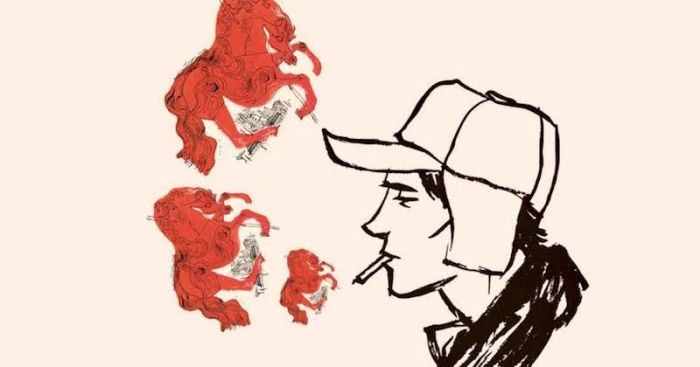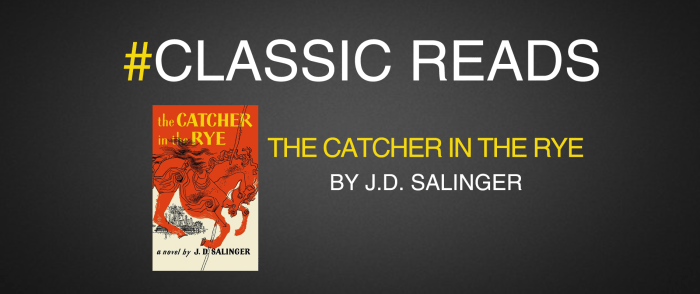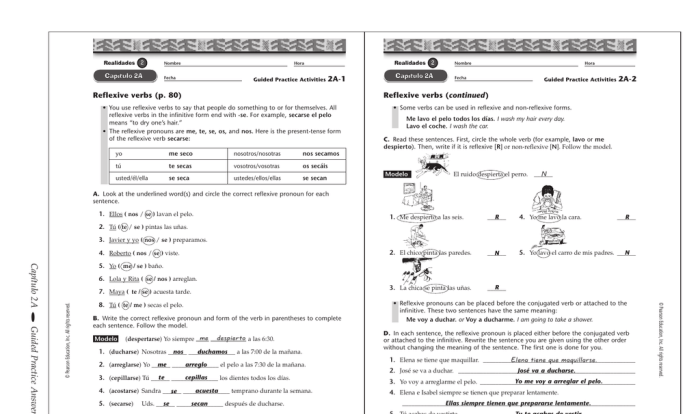Literary devices in catcher in the rye – In J.D. Salinger’s iconic novel The Catcher in the Rye, literary devices play a pivotal role in shaping the narrative, developing characters, and conveying profound themes. This essay delves into the intricate web of imagery, symbolism, irony, foreshadowing, and other literary techniques employed by Salinger to create a rich and unforgettable reading experience.
The novel’s first-person perspective through the eyes of Holden Caulfield offers a unique vantage point, allowing readers to intimately connect with his thoughts, emotions, and perceptions. Holden’s distinctive language and dialogue, marked by sarcasm and youthful rebellion, contribute significantly to his characterization and the overall tone of the novel.
Imagery and Symbolism

Throughout The Catcher in the Rye, Holden Caulfield encounters various recurring images and symbols that reflect his character and the novel’s themes. These elements include:
Ducks in Central Park, Literary devices in catcher in the rye
- Represent Holden’s desire for innocence and escape from the “phoniness” of the adult world.
- Symbol of Holden’s longing to preserve his childhood and avoid growing up.
The Museum of Natural History
- Represents Holden’s desire for permanence and stability in a world that feels chaotic and unpredictable.
- Symbol of Holden’s search for meaning and purpose in a meaningless existence.
The Red Hunting Hat
- Represents Holden’s individuality and rebellion against societal norms.
- Symbol of Holden’s desire to stand out from the crowd and be authentic.
Irony and Sarcasm

Holden Caulfield frequently employs irony and sarcasm throughout the novel, contributing to his characterization and the overall tone of the novel:
Irony
- Holden’s description of the “phoniness” of the adult world while exhibiting similar qualities himself.
- Holden’s desire for innocence and authenticity while engaging in questionable behavior.
Sarcasm
- Holden’s sarcastic remarks about his classmates and teachers, revealing his contempt for their superficiality.
- Holden’s use of sarcasm to distance himself from others and protect his vulnerability.
Foreshadowing and Suspense
The Catcher in the Ryeemploys foreshadowing and suspense to create tension and build anticipation throughout the narrative:
Foreshadowing
- Holden’s mention of his brother’s death early in the novel hints at the traumatic event that has shaped his character.
- Holden’s encounter with the prostitute Sunny foreshadows his impending loss of innocence.
Suspense
- Holden’s decision to leave Pencey Prep creates uncertainty and suspense about his future plans.
- Holden’s encounters with strangers in New York City heighten the sense of danger and unpredictability.
Point of View and Perspective
The novel’s use of the first-person perspective through Holden Caulfield’s narration significantly shapes the reader’s understanding of events and characters:
First-Person Perspective
- Provides an intimate and subjective view of Holden’s thoughts and experiences.
- Limits the reader’s knowledge to Holden’s perspective, creating uncertainty and ambiguity.
Holden’s Limited Perspective
- Influences the reader’s interpretation of events, as Holden’s biases and unreliability affect his narration.
- Forces the reader to question the truthfulness and accuracy of Holden’s account.
Dialogue and Language: Literary Devices In Catcher In The Rye

Holden Caulfield’s unique language and dialogue contribute to his characterization and the overall tone of the novel:
Language
- Uses informal and colloquial language, reflecting his youthful perspective and disdain for formality.
- Employs slang and profanity to express his frustration and alienation.
Dialogue
- Engages in witty and sarcastic conversations, revealing his intelligence and wit.
- Often uses dialogue to confront others and express his opinions.
Structure and Form
The episodic structure and fragmented form of The Catcher in the Ryecontribute to the novel’s themes and overall impact:
Episodic Structure
- Divides the novel into a series of interconnected episodes, reflecting Holden’s fragmented and disoriented state of mind.
- Allows for a nonlinear narrative, mirroring Holden’s chaotic and unpredictable journey.
Fragmented Form
- Uses short chapters and incomplete sentences, creating a sense of urgency and reflecting Holden’s emotional turmoil.
- Contributes to the novel’s overall mood of alienation and isolation.
FAQ Compilation
What is the significance of Holden Caulfield’s first-person perspective in the novel?
Holden’s first-person perspective provides an intimate and authentic portrayal of his thoughts, emotions, and experiences. It allows readers to connect deeply with his struggles, alienation, and search for meaning.
How does Salinger use symbolism to convey Holden’s disillusionment with society?
Salinger employs symbols such as the “phonies” and the “museum” to represent Holden’s contempt for the superficiality and hypocrisy he perceives in the adult world.
What is the role of foreshadowing in building suspense and tension in the novel?
Salinger uses foreshadowing to hint at future events, creating a sense of anticipation and unease. For example, Holden’s fascination with death and his recurring thoughts of suicide foreshadow his emotional crisis.

